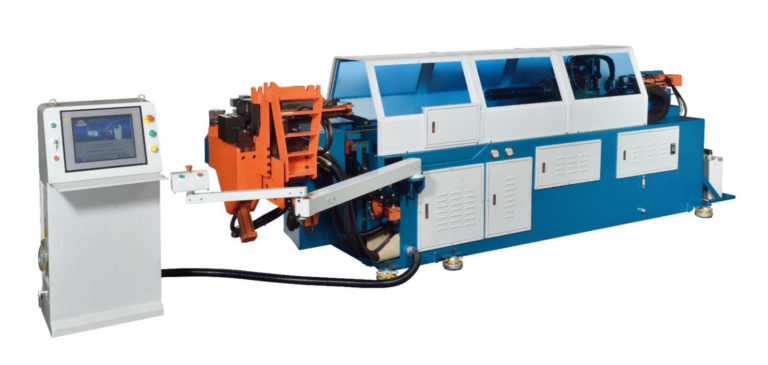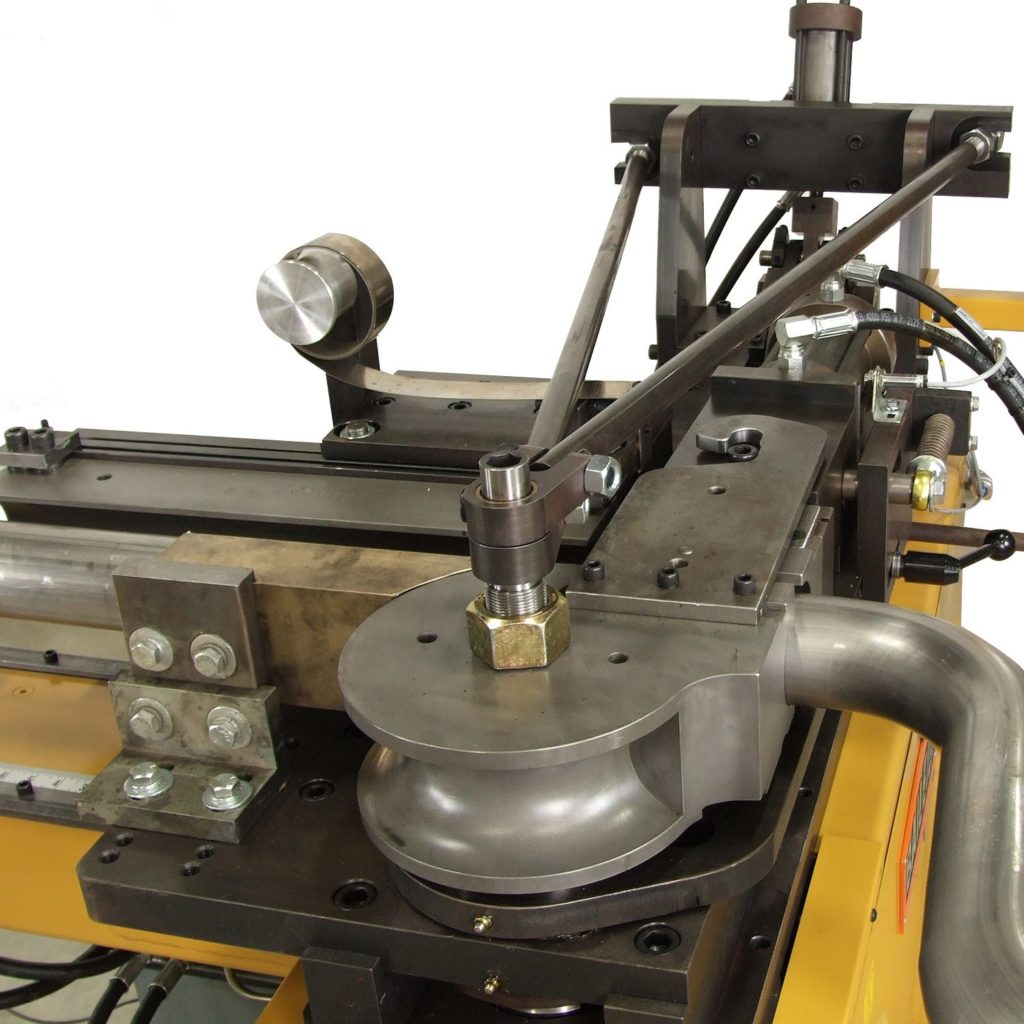
Bending pipes and profiles is currently one of the most popular methods of plastic processing of metal materials. This innovative method is used in countless industries. Most often, the advantages of bending are used in the manufacturing sector. Why? In this post, we will try to answer this question and explain the specifics of this method a bit, because we believe that bending pipes and profiles is the best way to achieve repeatability, precision, and optimization of production processes.

What is pipe and profile bending?
Bending pipes and profiles belongs to one of the types of plastic work most often used for the deformation of metals and their alloys. Bending consists of exerting pressure on a plane that exceeds its yield point using a specialised tool and instrumentation. Bending pipes and profiles is a process that permanently changes the curvature of the workpiece. This change results in a transformation of the structure, which may result in a change in the mechanical properties. The technology of shaping elements can be hot, semi-hot, or cold. Bending pipes and profiles using heat is most often used for thicker materials, while the method implementing low temperatures works best when dealing with materials of small thickness. The consistency and integrity of the fibres inside the element must be ensured while bending pipes and profiles because if they are not, the outcome may be unstable and, as a result, undesirable for the client.
Advantages of using the method of bending pipes and profiles in production
Repeatability of the obtained elements
The bending of pipes and profiles carried out by a qualified team of specialists and carried out with a properly equipped machine park guarantees an extremely high coefficient of repeatability of the obtained elements, which is one of the greatest advantages of this method of processing in the production industry. Bending can be safely used if you want to undertake the mass production of metal elements, such as car parts, furniture, or objects used in construction.
Order fulfilment precision
An appropriately calibrated bending machine can ensure exceptional precision in shaping objects. Bending pipes and profiles can be done at both high and low temperatures. The choice of the appropriate one depends strongly on the type of material, and a properly selected variant ensures the accuracy and detail of the results.
Production optimization
Bending pipes and profiles is a way to optimise production processes. What does this show? Well, bending saves material; products obtained by plastic processing are mass-produced, and the amount of post-production waste is negligible, which allows you to reduce unit costs and adjust the production line accordingly. Additionally, the automation of the bending processes of pipes and profiles contributes to the reduction of costs. Metal furniture made using this method is produced much faster than using other options. Bending does not change the continuity of the fibres, which ensures better mechanical properties of the finished product. In addition, bending pipes and profiles offer the possibility of creating complex shapes that are difficult or impossible to achieve with other technologies.

